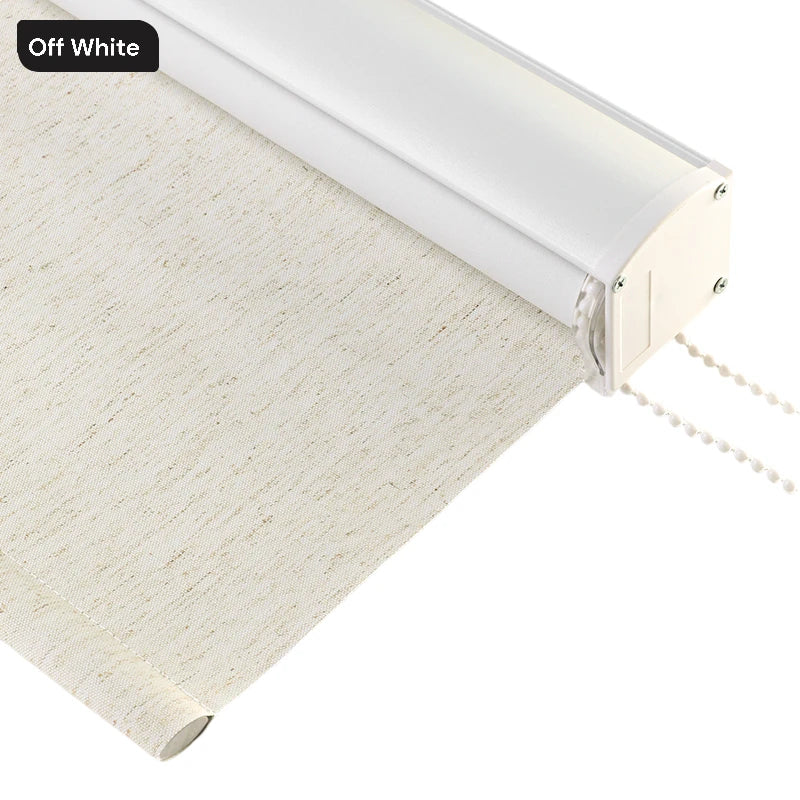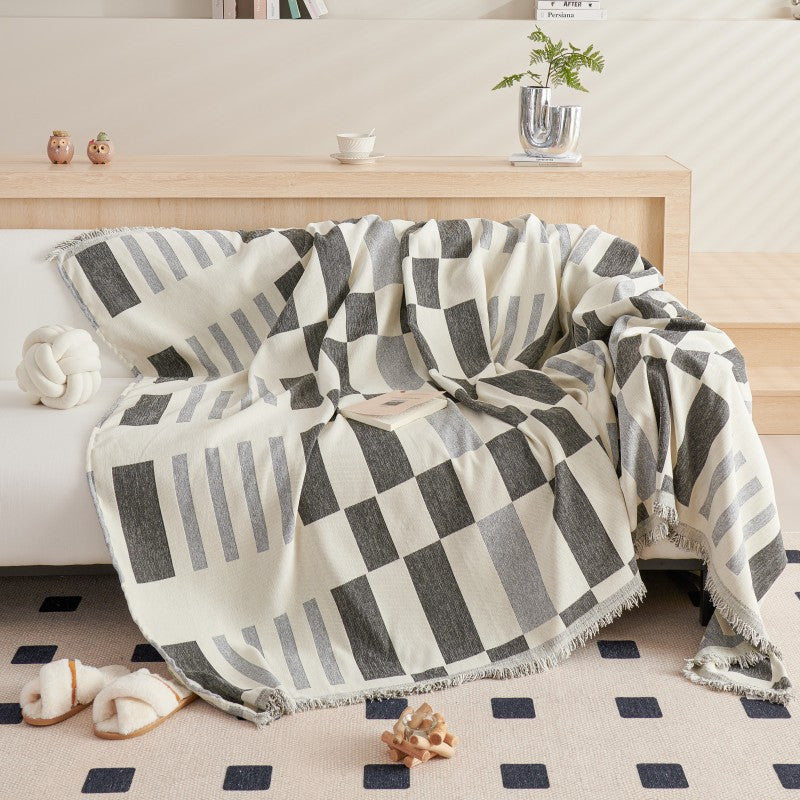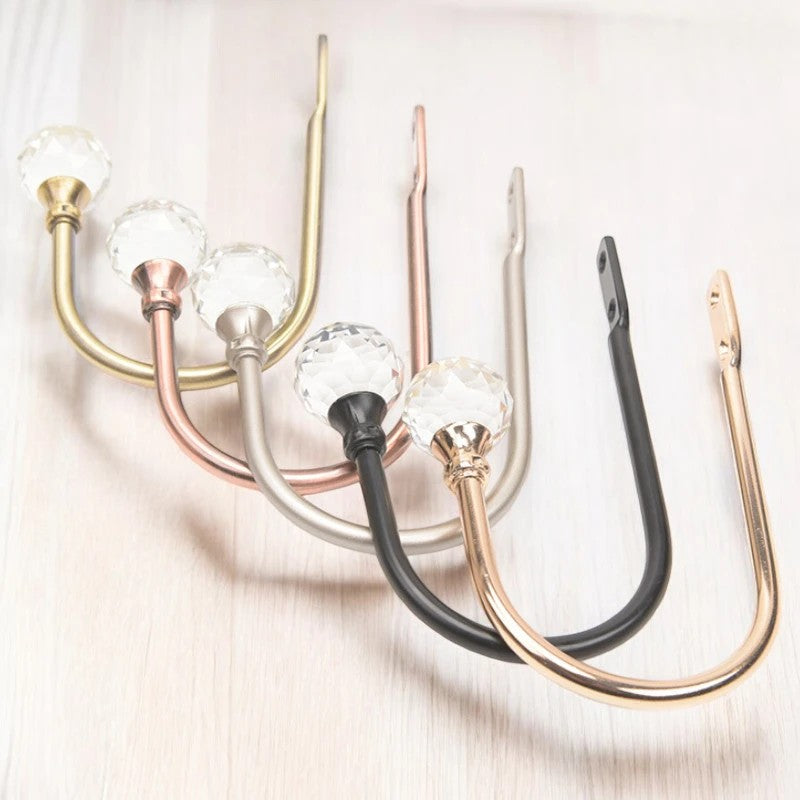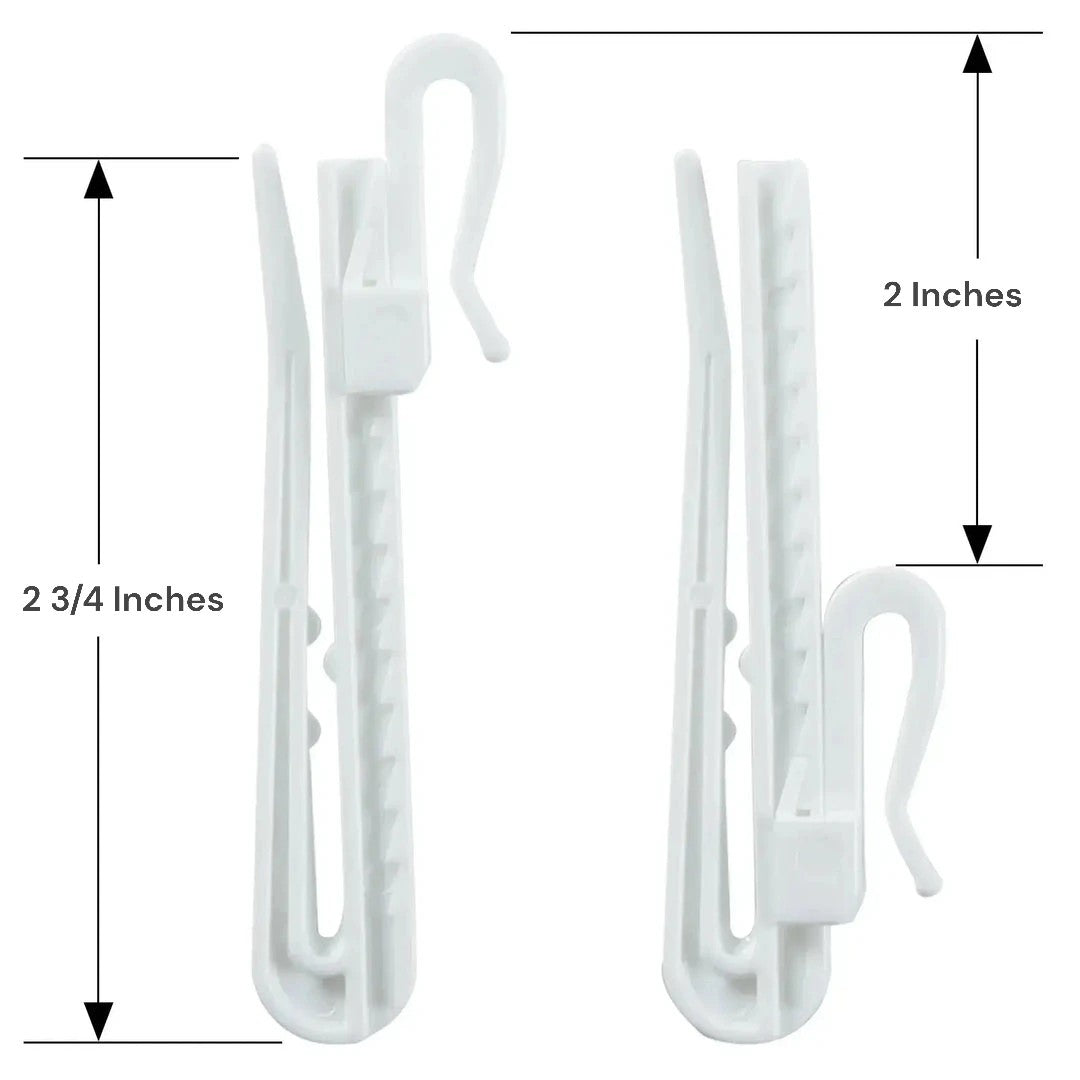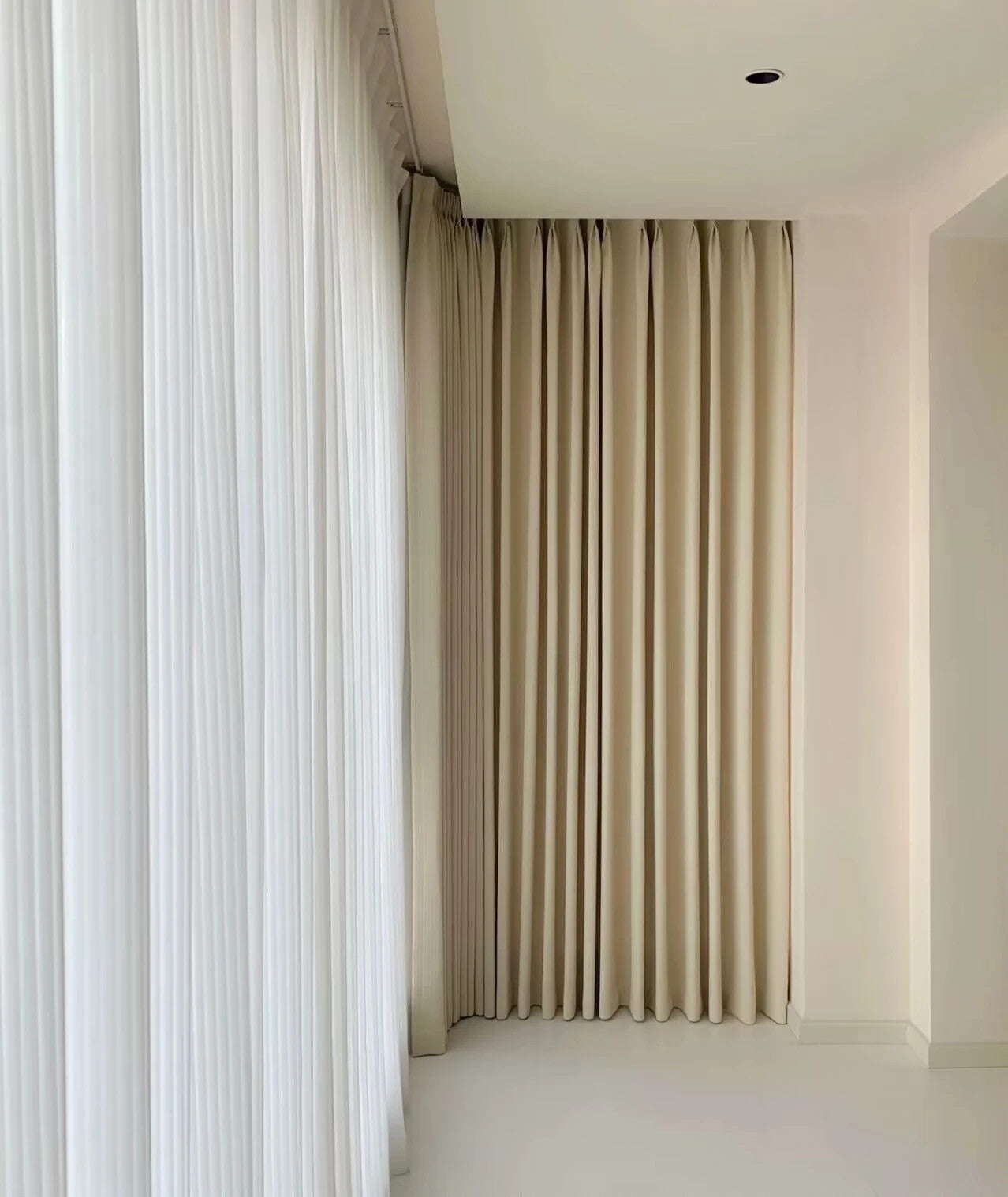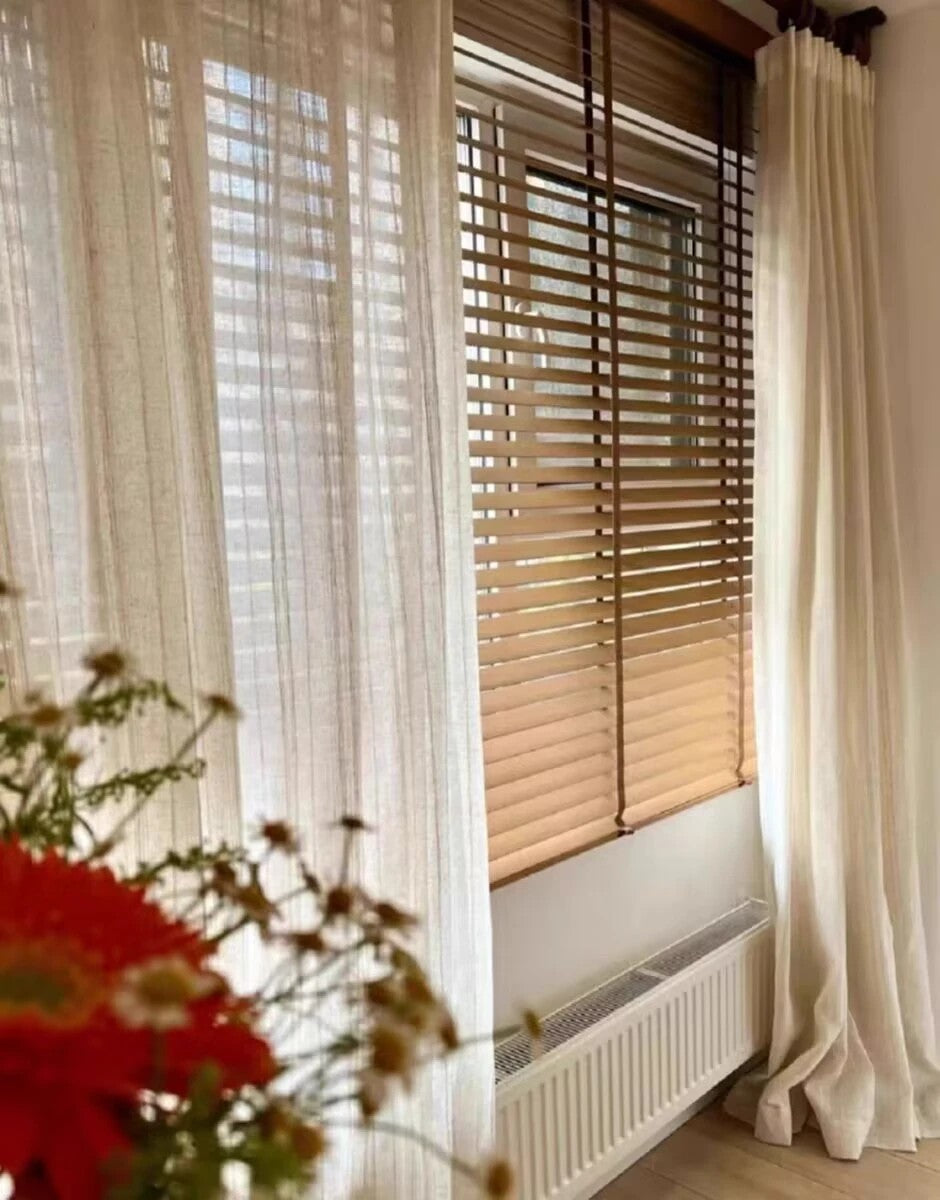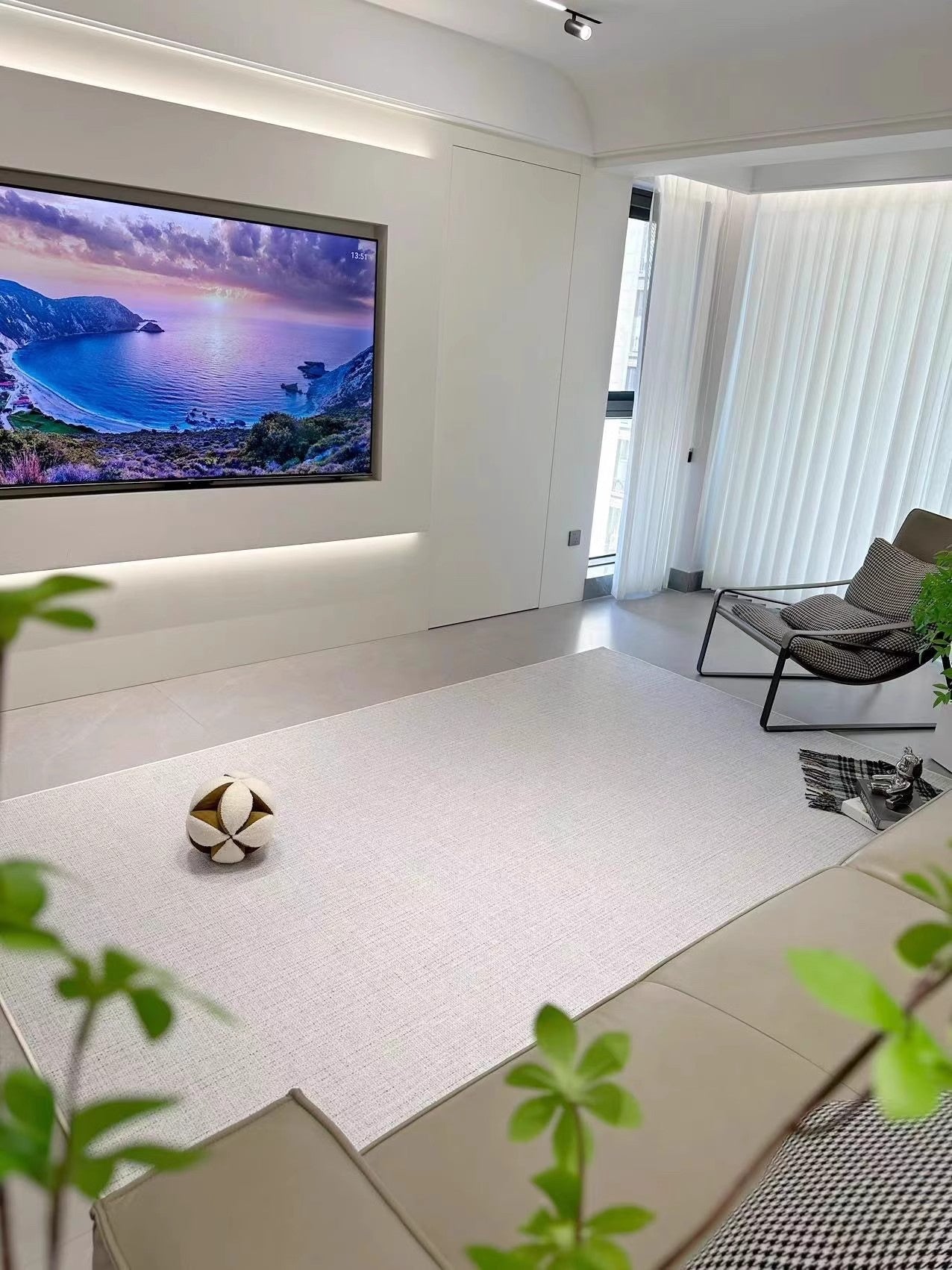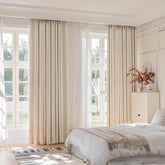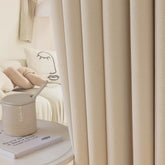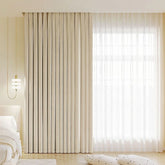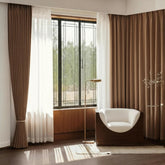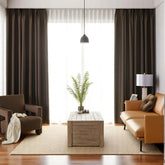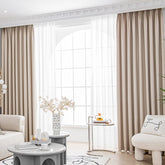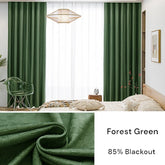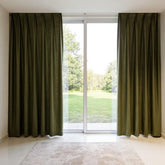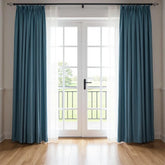The Complete Guide to Perfect Curtain Sizes: Measurements, Tips & Custom Options
Last Updated: March 2025
Have you ever hung curtains that were too short or too narrow? I have, and it's frustrating! Hi, I'm James, owner of Dolcewe.com. For over 10 years, I've helped thousands of customers find perfect curtains for their homes. Today, I'll share everything you need to know about curtain sizes.
Getting curtain size right makes your windows look bigger and your rooms feel cozier. The wrong size can make even beautiful curtains look cheap.
Don't worry - I'll make this simple for you!
Key Takeaways
| Section | Key Takeaway |
|---|---|
| Standard vs. Custom Sizes | Most windows aren't standard sizes, which is why custom curtains look better. Invest in custom curtains starting at $26.99 to avoid hemming and get a perfect fit from day one. |
| Measuring Windows | Add 8-12 inches on each side of your window width for proper coverage. For length, decide on sill, below sill, floor, or puddle style based on your room's needs. |
| Common Mistakes | Hang curtains 4-6 inches above window frames to make ceilings look higher. Choose curtains 2-3 times your window width for proper fullness and light blocking. |
| Special Windows | Bay windows need separate curtains for each section or a curved rod. For sliding doors, use floor-length curtains at least 84-96 inches wide that move easily. |
| Curtain Fullness | Light fabrics need 3x fullness, medium need 2.5x, and heavy need 2x your window width. More fullness creates a more luxurious look that blocks light better. |
| Rod Placement | Mount your rod 4-6 inches above the window and extend 8-12 inches on each side. This simple change makes windows look bigger and allows more light when curtains are open. |
| Room-Specific Sizes | Bedrooms need floor-length panels with blackout lining for better sleep. Kitchens work best with sill-length or cafe curtains in washable fabrics. |
| Standard Curtain Fixes | Always buy longer curtains and hem them rather than trying to extend short ones. Use curtain clips to adjust length without sewing if you need a quick fix. |
| Layering Curtains | Mount two rods - one for sheers (closer to window) and one for heavier curtains. Keep both layers the same length but make sheer panels slightly narrower. |
| Seasonal Adjustments | Use curtain ties to pull back fabric in warmer months for more airflow. Consider removable linings that add insulation in winter without buying new curtains. |
| Bottom Line | Measure carefully, go wider and higher than you think, and choose length based on your room's style. Send me a photo at james@dolcewe.com for personalized curtain advice. |
Why Curtain Size Matters for Your Home

The right curtain size makes your windows look bigger. It can also make your ceiling seem higher. Wrong sizes can make even nice curtains look cheap or odd.
I see many homes with curtains that are too short or narrow. This makes rooms feel unfinished. Getting the size right is the first step to beautiful window treatments.
Your curtains should match your style and room needs. They need to be wide enough to cover your window fully. They should also hang at the right height to look their best.
Standard Curtain Sizes vs. Custom Sizes

Many stores only sell standard sizes. These might work for some windows, but often leave gaps or drag on the floor.
Standard curtain panels usually come in these widths:
- 45 inches
- 54 inches
- 63 inches
- 84 inches
- 95 inches
- 108 inches
And these common lengths:
- 63 inches (sill length)
- 84 inches (floor length)
- 96 inches (tall windows)
- 108 inches (very tall windows)
But here's what many stores don't tell you: most windows aren't standard sizes. That's why at Dolcewe.com, we make custom curtains starting at just $26.99.
When You Need Custom Curtains
You need custom curtains when:
- Your windows are wider than 48 inches
- You have odd-sized windows
- You want a specific look
- You need exact measurements
At Dolcewe.com, we make custom curtains to fit any window. Our customers love having curtains made just for their homes. The fit is perfect every time.
Why custom sizes matter: Your home is unique. Your windows are too. Custom curtains fit perfectly without hemming or other fixes. They hang just right from day one.
How to Measure Your Windows for Curtains
Let's start with the basics. You need two key measurements: width and length. Getting these right will save you time and money.
Measuring windows seems hard but it's really easy. Check our curtain size calculator for help.
You just need a tape measure and these steps:
Measuring Curtain Width
- Measure the width of your window frame.
- Add 8-12 inches on each side (16-24 inches total).
- For light filtering, multiply your window width by 1.5. For more privacy or a fuller look, multiply by 2 . This gives enough fabric to cover the window and block light.
For example: If your window is 36 inches wide, your curtains should be 52-60 inches wide for each panel.
Measuring Curtain Length

For length, you have options based on your style choice. Measure from where your curtain rod will sit to where you want the curtains to end.
| Curtain Style | Where to Measure To | Best For |
|---|---|---|
| Sill Length | Window sill | Kitchens, small windows |
| Below Sill | 4-6 inches below sill | Casual rooms |
| Floor Length | 1/2 inch above floor | Living rooms, bedrooms |
| Puddle | 1-3 inches onto floor | Formal rooms |
Here are standard curtain lengths and when to use them:
| Curtain Length | Best For | Look & Feel |
|---|---|---|
| 63 inches | Small windows, kitchen | Casual, practical |
| 84 inches | Standard windows | Classic, versatile |
| 96 inches | Taller windows | Elegant, formal |
| 108+ inches | High ceilings | Dramatic, luxurious |
Pro tip: Measure each window separately. Even windows that look the same can be different sizes. Hang your curtain rod 4-6 inches above your window. This makes your window look taller!
Curtain Fullness: Why It Matters

Fullness means how much the curtain fabric bunches when closed. More fullness looks more luxurious.
For light fabrics like sheers: aim for 2x fullness For medium fabrics: aim for 1.5 - 2x fullness For heavy fabrics: aim for 2x fullness
Example: For a 48-inch window with medium fabric, you need about 96 inches of total curtain width (48 × 2 = 96).
At Dolcewe, our curtains come with a default 1.5 times of fullness. You can always opt for 2 times of fullness. No complicated calculation needed.
Common Curtain Size Mistakes to Avoid
After helping thousands of customers, I've seen these mistakes often:
Mistake #1: Hanging Curtains Too Low
Many people hang curtains right above the window frame. This makes ceilings look lower and windows smaller.
The fix: Hang your curtain rod or track 4-6 inches above the window frame or halfway between the window frame and ceiling.
Mistake #2: Curtains That Are Too Narrow
Skinny curtains make your windows look small and don't block light well.
The fix: Your curtains should be 1.5-3 times the width of your window when closed. For a 36-inch window, you need 54-108 inches of total curtain width.
Mistake #3: Wrong Length Curtains
Too-short curtains are the biggest mistake I see. They make rooms look unfinished.
The fix: Measure from your curtain rod to where you want curtains to end. For most rooms, curtains should just touch the floor.
Curtain Rod Placement for Best Results

Where you put your curtain rod changes how your curtains look. The right placement can make your windows seem larger.
Height Placement
Mount your curtain rod 4-6 inches above your window frame. This makes your ceiling feel higher.
For a dramatic look, go even higher - up to halfway between the window and ceiling.
Never place your rod right on the window frame. This makes your window look smaller.
Width Placement
Extend your curtain rod 3-6 inches past each side of your window. This lets in more light when curtains are open. It also makes your window look wider.
When curtains are open, they should frame your window, not block it.
Special Window Types and Their Curtain Needs
Not all windows are the same. Here's how to handle tricky windows:
Bay Windows
Bay windows need special care. You can use:
- Separate curtains for each section
- A curved rod that follows the window shape
Measure each window section separately. Add them together for total width needed.
Sliding Glass Doors

For sliding doors, you need curtains that:
- Are floor length
- Can move easily on the rod
- Are wide enough to fully open
I suggest curtains that are at least 84-96 inches wide for standard sliding doors.
Extra Large Windows
For large windows over 60 inches wide:
- Use multiple panels
- Consider a center tie-back
- Make sure your rod is strong enough
Curtain Sizes for Different Rooms
Each room has different needs for curtains:
Bedroom Curtain Sizes

Bedrooms need good light blocking. Choose:
- Floor-length curtains
- Wider panels for better light control
- Blackout lining curtains for better sleep
Living Room Curtain Sizes

Living rooms often have larger windows. Consider:
- Floor-length or puddle style for elegance
- Extra width for fullness when closed
- Sheer curtains for a welcoming feel
Kitchen Curtain Sizes

Kitchens work well with:
- Sill-length curtains that don't touch counters
- Cafe curtains that cover only the bottom half
- Washable fabrics that resist stains
How to Make Standard Curtains Work (If You Must)
Sometimes you need a quick fix with store-bought curtains. Here's how:
- Buy longer curtains and hem them (easier than making short curtains longer)
- Use curtain clips to adjust length without sewing
- Hang the rod higher to make curtains look longer
But remember, custom curtains save time and look better in the long run.
Curtain Size Problem-Solving Tips
Even with good measurements, problems can happen. Here are fixes for common issues.
Curtains Too Long
If your curtains touch the floor too much:
- Hem them to the right length
- Use curtain clips to raise them slightly
- Try a different hanging style
Many of my customers use clip rings to adjust height easily.
Curtains Too Short
Short curtains look unfinished. If yours are too short:
- Lower your curtain rod if possible
- Buy longer curtains
- Use curtain rings
- Add decorative trim to the bottom
Rule of thumb: Curtains should never end more than 1 inch above the floor.
Layering Curtains: Sizes That Work Together
Layering sheers under heavier curtains adds style and light control. For this look:
- Mount two rods - one for sheers (closer to window) and one for curtains
- Make sure the sheer panels are slightly narrower
- Keep both layers the same length for a clean look
Or simply opt for our multi-layer curtains
Seasonal Curtain Size Considerations
Your curtain needs may change with the seasons. I help customers plan for this.
In summer, you might want:
- Lighter, shorter curtains
- Sheer panels for breezes
- UV protecting fabrics
In winter, consider:
- Longer, puddle-style curtains to block drafts
- Thermal lined curtains for insulation
- Heavier fabrics to keep heat in
Having two sets of curtains gives you options all year round.
Curtain Size Conversion and Units
If you are accustomed to using different units of measurement or need to convert curtain sizes from one unit to another, we have got you covered. To make things easier, we have a curtain size calculator that will help you convert inches to centimeters or vice versa.
The formula for converting inches to centimeters is as follows:
Centimeters = Inches * 2.54
On the other hand, to convert centimeters to inches, use the following formula:
Inches = Centimeters / 2.54
To use these formulas, simply measure your curtains and plug in the measurements to the conversion formula. But don't worry, you don't need a calculator handy. Just use our handy curtain size calculator to convert your curtain dimensions accurately.
With our curtain size calculator, you can quickly convert inches to centimeters or vice versa with ease. Avoid choosing the wrong curtain size due to confusion with units, and use our tool to ensure that your measurements are accurate.
The Dolcewe Custom Curtain Process
Perfect curtain size comes down to three things:
- Measure carefully
- Go wider and higher than you think
- Choose length based on the room's style
At Dolcewe.com, we've helped thousands of customers find their perfect curtain size. Our custom curtains start at just $26.99, and we'll help you measure right the first time.
Have questions about your specific windows? Send me a photo at james@dolcewe.com, and I'll give you personal advice.
Remember, the right size curtains don't just cover your windows - they transform your rooms. Take the time to get it right, and you'll enjoy the results for years.
Ready to find your perfect curtains? Visit Dolcewe.com today and use code WELCOME10 for 10% off your custom curtains.
FAQ
How do I choose the right curtain size for my home?
Choosing the right curtain size for your home involves considering factors like window measurements, length styles, and room aesthetics. Our comprehensive guide will provide expert advice to help you make the best decision.
What are the standard curtain sizes and how do I measure my windows?
Before selecting curtains, it's important to understand the standard curtain sizes and accurately measure your windows. We'll provide a curtain size chart and step-by-step instructions to ensure you find the perfect fit for your windows.
How do I adjust the height and lengths of my curtain rod?
Once you've determined the appropriate curtain size, you'll need to adjust the curtain rod height and choose the right curtain rod length. Our guide will walk you through measuring the rod length and offer tips for proper installation.
What are the different length styles for curtains and how do I choose the right one?
There are various length styles for curtains, including sill length, floor length, and puddle length. We'll discuss the pros and cons of each option to help you choose the perfect style for your space.
What factors should I consider when choosing the right curtain size?
Beyond measurements and length styles, factors like room purpose, matching decor, and current trends can impact your choice of curtain size. Our guide will provide valuable tips to help you make an informed decision.
What if standard curtain sizes don't meet my requirements?
If standard curtain sizes don't meet your needs, custom sizing might be the solution. We'll discuss how to measure curtains accurately and explore fullness multipliers to help you achieve the perfect fit and look for your curtains.
What are some important factors to consider when choosing curtain size?
When choosing curtain size, factors such as fabric type, color, pattern, and maintenance are important to consider. We'll also provide tips for curtain installation, hardware, and safety for children and pets.
How do I convert curtain sizes between units of measurement?
If you need to convert curtain sizes between inches and centimeters or vice versa, we've got you covered. Our guide will provide a curtain size calculator and a simple conversion formula to make the process easy.



